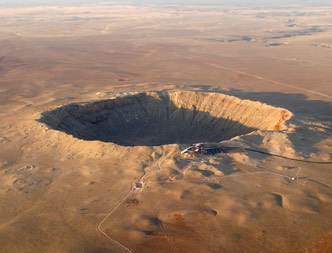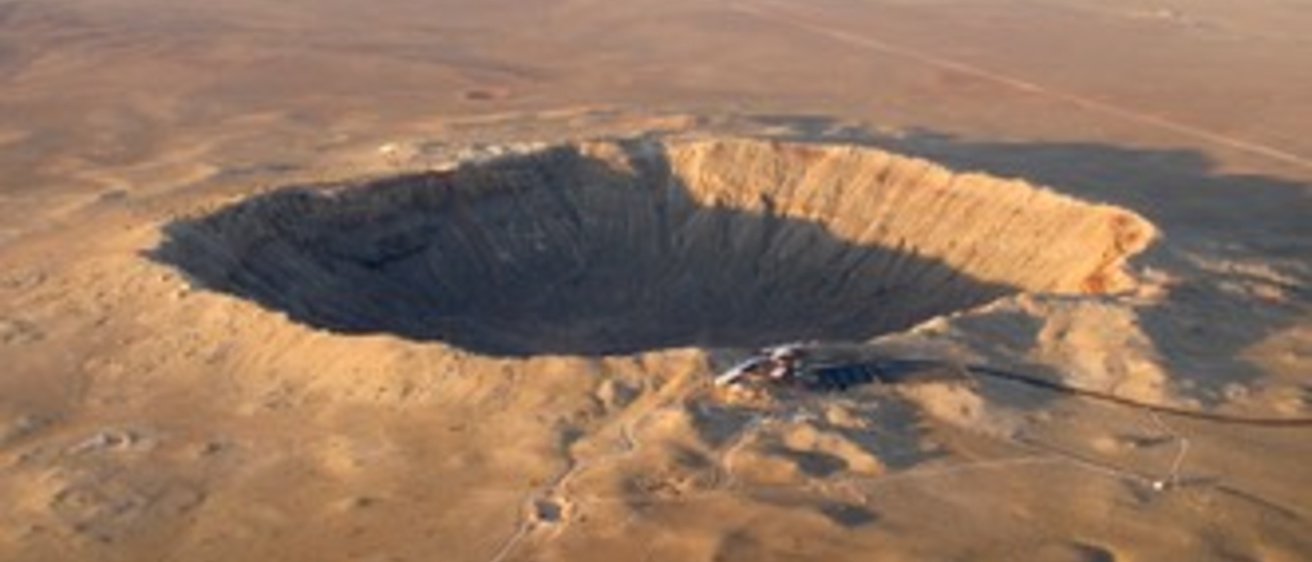About the Barringer Crater

Barringer Crater (also known as Meteor Crater) is a meteorite crater located 70 kilometers from Flagstaff, Arizona. Barringer was the first crater proven to be the result of an impact and remains one of the world's most well preserved impact sites.
The crater stretches 1200 meters across and 170 meters deep, with the rim of the crater rising 45 meters above the surrounding landscape. The area around the impact site is tinted red with oxidized iron from the nickel-iron meteor which impacted there almost 50,000 years ago.
Geologist Daniel Barringer, who first suggested that the crater was the result of an impact, was also a wealthy investor in mining operations. Not realizing that the energy released by the impact would have destroyed most of the meteor, Barringer spent 25 years and hundreds of thousands of dollars mining the center of the crater in search of what he believed was an iron meteor worth billions of dollars. Barringer died of a heart attack in 1929, shortly after reading conclusive evidence that there was no meteor to be found and realizing that he had bankrupted himself searching for it.

